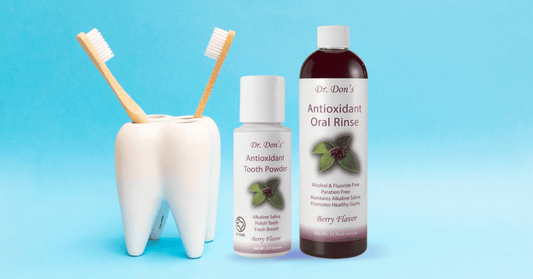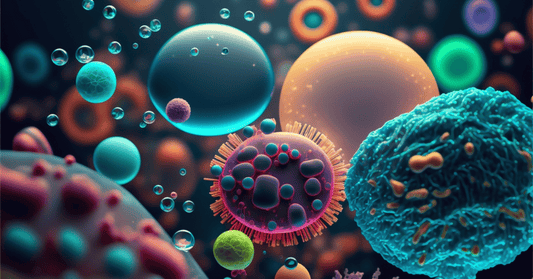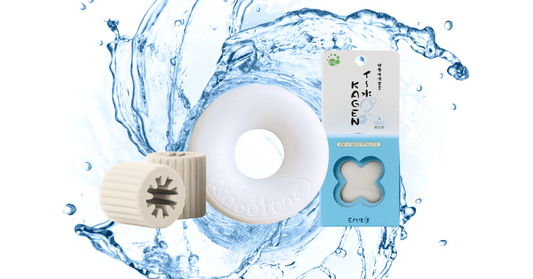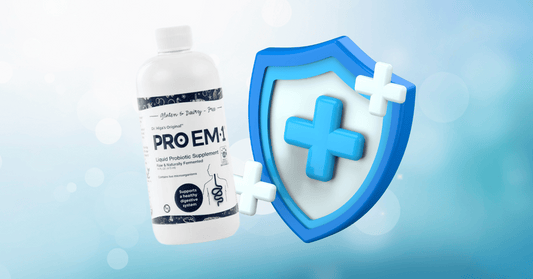
The Benefits of Lactic Acid
You may have heard of lactic acid when reading the label of a disinfectant you use or of a new skincare product you just bought. But did you know that it's also a vital component that plays a part in our bodily function?
Let's take a closer look at what lactic acid is and the unique properties it has.
What is Lactic Acid?
Lactic acid forms in our bodies in two ways, through anaerobic respiration and digesting fermented foods. It's one of the most common probiotics in fermented foods and can be used to fight off bad bacteria in our guts.
During anaerobic respiration, our bodies produce lactic acid in our guts and deposit it into the bloodstream. From there, it helps fuel our muscles and our heart during extensive exercising. At one time, lactic acid was thought to cause unwanted muscle soreness after exercising, but that later proved not true.
You may have heard of lactic acid in a negative connotation, such as Lactic Acidosis. This is when your body increases its lactic acid production which can cause an unwanted build-up in the bloodstream.
However, this is no reason to limit your lactic acid intake or avoid fermented foods because it's an integral part of normal bodily function. The mitochondria need it for energy, our cells need it to act as a signaling molecule and it helps us with glucose production.
Lactic Acid and Fermentation
When our bodies create lactic acid through fermentation, it helps with glucose production and cell respiration. It's the reason fermented foods commonly have a sour taste to them. The microorganisms in fermented foods help convert sugar into lactic acid, which helps increase nutrient absorption and break down the nutrients in your gut.
Lactic acid bacteria are part of the probiotic organisms and, are the most common type of probiotic that you can find in the foods you eat, such as sauerkraut, yogurt, buttermilk, or cheese.
Antibacterial and Antiviral Benefits
Probiotics have always been said to have had antiviral components that can help our bodies fight off bad bacteria and viruses. Research has shown that lactic acid has antimicrobial properties in fermented foods.
Lactic acid bacteria may also help alleviate symptoms of viral diseases, such as upper respiratory tract infections or diarrhea. One study shows that individuals who take probiotics can reduce antibiotic-associated diarrhea by 42%. It can also treat vaginal, gastrointestinal, and oral infections.
How it works is that lactic acid bacteria create low-molecular-weight antimicrobial substances such as hydrogen peroxide, organic acids, pyrrolidone-5-carboxylic acid, diacetyl, and reuterin. Diketopiperazines, hydroxy derivatives of fatty acids, and phenyllactate are several antifungal agents that lactic acid makes as well.
With the rise of more and more infectious diseases, doctors are turning to lactic acid for its antibacterial and antiviral benefits to see how it can help the body combat illnesses. Metabolites such as lactic acid and hydrogen peroxide are being studied more in-depth to understand their ability to decrease viral loads.
Because of the antibacterial properties that lactic acid contains, it's commonly found in disinfectants like hand sanitizer, dish soap, and household cleaning products.
You may also notice it's a core ingredient in popular skincare treatments and products. That’s because lactic acid helps with cell turnover. Which can reduce signs of aging, prevent deep wrinkles from forming, and provide you with a smoother complexion.

How to get More out of Lactic Acid
Increasing your intake of probiotics can be a great way to boost your immune system, fight off digestive disorders, and prevent unwanted illnesses. To get more out of lactic acid, you’ll want to start prioritizing fermented foods such as:
- Sauerkraut
- Cheese
- Buttermilk
- Miso
- Yogurt
- Kefir
- PRO EM-1
- Kimchi
- Pickles
- Kombucha
Many of these fermented foods contain the most popular probiotic, lactic acid which, can give you the benefits you’re looking for. However, some fermented foods can be harsh on the stomach. Before incorporating these foods into your everyday diet, we recommend trying a few and listening to how your body reacts.
You may experience unwanted bloating but, it’s nothing to cause alarm. The bloating means the probiotics in the fermented foods are working to kill off the bad bacteria in your gut. Although bloating is a sign that the probiotics are working, it can be uncomfortable for some individuals.

How you can use Pro-EM 1 Liquid Probiotic
Pro EM-1 is a liquid fermented probiotic that contains over 6 million live CFUs, creating the perfect blend of live microbes. These microbes work together to eat the sugars in your system and create enzymes, vitamins, and other compounds that help to keep your gut health balanced. PRO-EM 1 is dairy-free, soy-free, and gluten-free, so if you’re someone who can’t increase your intake of fermented foods due to an allergy, this may be a better alternative that’s easier on the stomach. Prioritizing this supplement into your daily life can give you more energy, improve your bowel movements, and give you an immunity boost.
Lactic acid is an integral part of our body's function. We all need it for our cells to function properly and rebalance the bacteria in our guts. Although your body naturally creates lactic acid through anaerobic respiration, a poor diet increases the bad bacteria in our gut. Increasing your intake of fermented foods and or taking a daily probiotic, will rebalance your gut bacteria and improve your health in many ways. Learn more about PRO EM-1 probiotic here.







